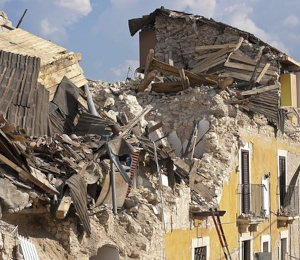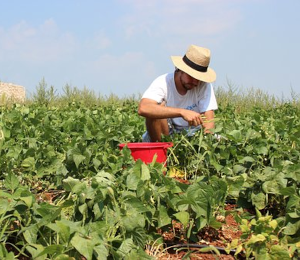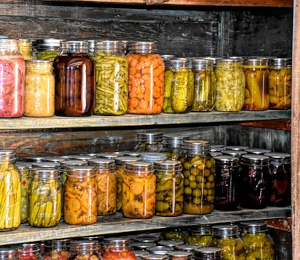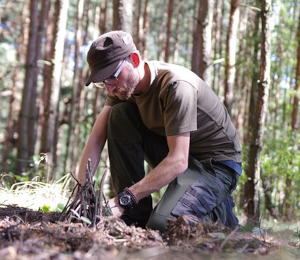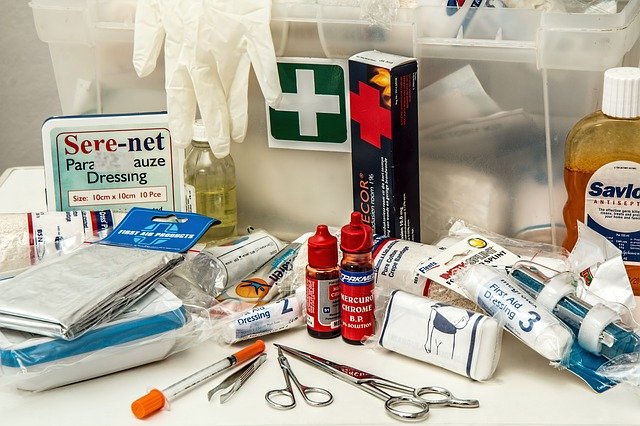
After a disaster, local officials and relief workers will be on the scene, but they cannot reach everyone immediately. You could get help in hours, or it may take days. Basic services, such as electricity, gas, water, sewage treatment, and telephones, may be cut off for days or even weeks. You may have to evacuate at a moment’s notice and take essentials with you. You probably will not have the opportunity to shop or search for the supplies you will need. A Disaster Supplies Kit can help your family stay safe and be more comfortable after a disaster.
What is a Disaster Supplies Kit?
A Disaster Supplies Kit is a collection of basic items that members of a household would probably need in the event of a disaster. The items are stored in a portable container(s) near, or as close as possible to, the exit door. Every household should assemble a Disaster Supplies Kit and keep it up to date. The number of people in a household and their ages and abilities will determine how many containers will be required to carry the kit items.
What to Tell Children
Parents and caregivers should:
- Involve children in disaster preparedness at home so they are aware of the need to prepare and know what is being done. As they are able, have children help plan and assemble kits and put them where they will be ready if needed. Involving children is the first step in helping them know what to do in an emergency.
- Ask children to help the household remember to keep the kits updated by rotating the emergency food and water or replacing it every six months, and by replacing batteries as necessary. Children could make calendars and mark the dates for checking emergency supplies.
- Ask children to think of items that they would like to include in a Disaster Supplies Kit, such as books or games or nonperishable food items.
- Involve children in preparing plans and disaster kits for pets and other animals.
Assemble a Disaster Supplies Kit
You should assemble and maintain a portable Disaster Supplies Kit that you can use at home or can take with you if you must evacuate. In addition, if you have a vehicle, you should always keep it stocked with basic emergency supplies. (See Emergency Supplies for Your Vehicle.)
In a disaster situation, you may need access to your Disaster Supplies Kit quickly—whether you are sheltering at home or evacuating. Store the items in your kit in sturdy, clearly labeled, easy-to-carry containers near the door, if possible. Duffle bags, backpacks, and covered trash receptacles are good candidates for containers. In addition to the three-day supply of food and water in your Disaster Supplies Kit, you should consider maintaining a two-week supply of food and water in your home. (See Food and Water for Emergencies and Water Storage.) Following a disaster, having the right supplies can help your household endure home confinement or evacuation.
Assemble the following items for use at home or in case you must evacuate. Pack them in easy-to-carry containers and label the containers clearly. (See Disaster Supplies Storage Tips.)
- Portable, battery-powered radio or television and extra, fresh batteries.
- Flashlight and extra, fresh batteries.
- First aid kit. (See First Aid Kit.)
- Cash and coins.
- Copies of personal identification, such as driver’s licenses, passports, and work identification badges, and copies of medical prescriptions and credit cards.
- An extra set of car keys and house keys.
- Matches in a waterproof container.
- Map of the area marked with places you could go and their telephone numbers.
- Items for infants, such as formula, diapers, bottles, pacifiers, powdered milk, and medications not requiring refrigeration.
- Special items, such as denture needs, contact lenses and supplies, extra eyeglasses, and hearing aid batteries.
- Items for seniors, disabled persons, or anyone with serious allergies.
- Food—a three-day supply in the kit and at least an additional four-day supply readily accessible for use if you are confined to home. You may want to consider stocking a two-week supply of food and water in your home.home.(See Food and Water for Emergencies for a list of suggested foods, packaging options, and food safety tips, and Keeping Refrigerated Food Safe in a Power Outage.)
- Comfort/stress foods — cookies, hard candy, sweetened cereals, lollipops, tea bags, instant coffee.
- Water—three gallons per person in the kit and an additional four gallons per person readily accessible for use if you are confined to home. (See Storing Water, and, for information on treating water of questionable purity, see Drinking Water Safety.) Kitchen accessories: manual can opener; mess kits or disposable cups, plates, and utensils; utility knife; sugar and salt; aluminum foil and plastic wrap; resealable plastic bags.
- Medications—Prescription and non-prescription that are regularly used. Check with your physician or pharmacist on storage requirements.
- Household liquid bleach.
- For each person, one complete change of clothing and footwear, including sturdy work shoes or boots, raingear, and other items adjusted for the season, such as hat and gloves, thermal underwear, sunglasses, dust mask.
- Blankets or sleeping bag for each person.
- Small tent, compass, small shovel.
- Paper, pencil; needles, thread; small A-B-C-type fire extinguisher (see Fire Extinguishers); medicine dropper; whistle; emergency preparedness manual.
- Sanitation and hygiene items: toilet paper, towelettes, soap, hand sanitizer, liquid detergent, feminine supplies, shampoo, deodorant, toothpaste, toothbrushes, comb and brush, lip balm, sunscreen, plastic garbage bags (heavy-duty) and ties (for personal sanitation uses), medium-sized plastic bucket with tight lid, disinfectant, household chlorine bleach.
- Entertainment, such as games and books. Favorite comfort dolls, stuffed animals for small children.
- Roll of duct tape (10 millimeters thick) and scissors.
- Plastic sheeting pre-cut to fit shelter-in-place room openings.
Read More


